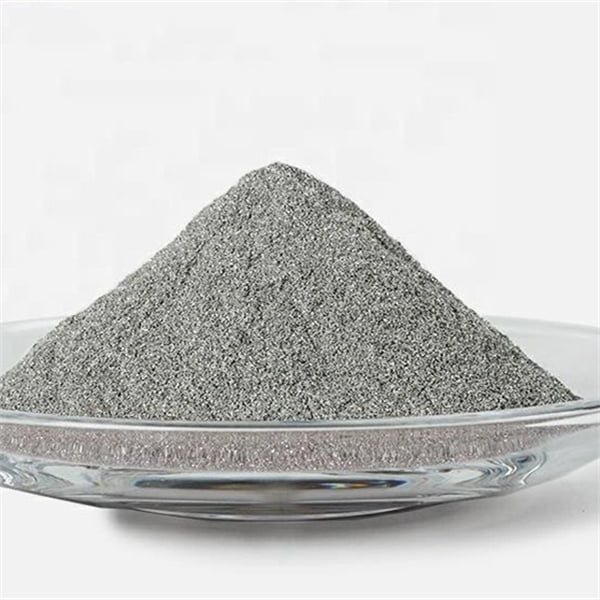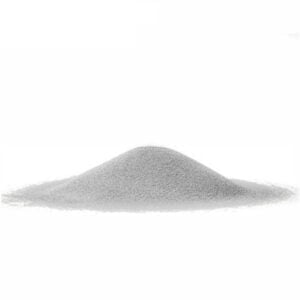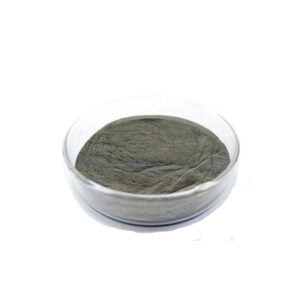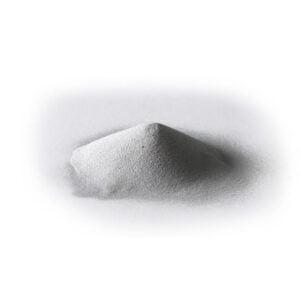17-4PH Stainless Steel Powder
17-4PH is a precipitation hardening stainless steel powder widely used in additive manufacturing across aerospace, medical, automotive, and general engineering sectors. It offers an excellent combination of high strength, good corrosion resistance, and weldability.
Low MOQ
Provide low minimum order quantity to meet different needs.
OEM & ODM
Provide customized products and design services to meet unique customer needs.
Adequate Stock
Ensure fast order processing and provide reliable and efficient service.
Customer Satisfaction
Provide high quality products with customer satisfaction at the core.
share this product
Table of Contents
Overview of 17-4PH Stainless Steel Powder
17-4PH is a precipitation hardening stainless steel powder widely used in additive manufacturing across aerospace, medical, automotive, and general engineering sectors. It offers an excellent combination of high strength, good corrosion resistance, and weldability.
This article provides a detailed guide to 17-4PH powder covering composition, properties, AM process parameters, applications, specifications, suppliers, handling, inspection, comparisons, pros and cons, and FAQs. Key information is presented in easy-to-reference tables.
Composition of 17-4PH Stainless Steel Powder
The composition of 17-4PH powder is:
| Element | Weight % | Purpose |
|---|---|---|
| Iron | Balance | Principal matrix element |
| Chromium | 15 – 17.5 | Oxidation resistance |
| Copper | 3 – 5 | Precipitation hardening |
| Nickel | 3 – 5 | Austenite stabilizer |
| Niobium | 0.15 – 0.45 | Carbide former |
| Manganese | 1 max | Deoxidizer |
| Silicon | 1 max | Deoxidizer |
| Carbon | 0.07 max | Strengthener and carbide former |
Copper enables precipitation hardening while chromium provides corrosion resistance.
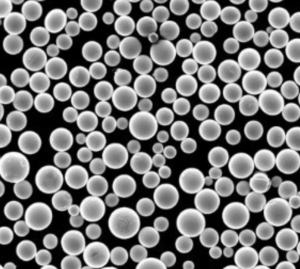
Properties of 17-4PH Stainless Steel Powder
Key properties of 17-4PH powder include:
| Property | Description |
|---|---|
| High strength | Up to 1310 MPa tensile strength when aged |
| Hardness | Up to 40 HRC in aged condition |
| Corrosion resistance | Comparable to 316L stainless in many environments |
| Toughness | Superior to martensitic stainless steels |
| Wear resistance | Better than 300 series stainless steels |
| High temperature stability | Strength maintained up to 300°C |
The properties make 17-4PH suitable for diverse applications from aerospace components to injection molds.
AM Process Parameters for 17-4PH Powder
Typical parameters for printing 17-4PH powder include:
| Parameter | Typical value | Purpose |
|---|---|---|
| Layer height | 20-100 μm | Balance speed and resolution |
| Laser power | 150-400 W | Sufficient melting without evaporation |
| Scan speed | 400-1000 mm/s | Density versus production rate |
| Hatch spacing | 100-200 μm | Density and mechanical properties |
| Support structure | Minimal | Easy removal |
| Hot isostatic pressing | 1120°C, 100 MPa, 3 hrs | Eliminate porosity |
Parameters tailored for density, production rate, properties and post-processing needs.
Applications of 3D Printed 17-4PH Parts
Additively manufactured 17-4PH components are used in:
| Industry | Applications |
|---|---|
| Aerospace | Structural brackets, fixtures, actuators |
| Medical | Dental implants, surgical instruments |
| Automotive | High strength fasteners, gears |
| Consumer products | Watch cases, sporting equipment |
| Industrial | End-use metal tooling, jigs, fixtures |
Benefits over machined 17-4PH parts include complex geometries, reduced lead time and machining allowances.
Specifications of 17-4PH Powder for AM
17-4PH powder must meet strict specifications:
| Parameter | Specification |
|---|---|
| Particle size range | 15-45 μm typical |
| Particle shape | Spherical morphology |
| Apparent density | > 4 g/cc |
| Tap density | > 6 g/cc |
| Hall flow rate | > 23 sec for 50 g |
| Purity | >99.9% |
| Oxygen content | <100 ppm |
Custom size distributions and controlled moisture levels available.
Suppliers of 17-4PH Stainless Steel Powder
Reputable 17-4PH powder suppliers include:
| Supplier | Location |
|---|---|
| Sandvik Osprey | UK |
| Carpenter Additive | USA |
| LPW Technology | UK |
| Erasteel | Sweden |
| Critical Materials | USA |
| Praxair | USA |
Prices range from $50/kg to $120/kg based on purity, size distribution and order volumes.
Handling and Storage of 17-4PH Powder
As a reactive material, careful 17-4PH powder handling is essential:
- Store sealed containers away from moisture, acids, ignition sources
- Use inert gas padding during transfer and storage
- Ground equipment to dissipate static charges
- Avoid dust accumulation through extraction and ventilation
- Follow applicable safety guidelines
Proper techniques ensure optimal powder condition.
Inspection and Testing of 17-4PH Powder
Quality testing methods include:
| Method | Parameters Tested |
|---|---|
| Sieve analysis | Particle size distribution |
| SEM imaging | Particle morphology |
| EDX | Chemistry and composition |
| XRD | Phases present |
| Pycnometry | Density |
| Hall flow rate | Powder flowability |
Testing per ASTM standards verifies powder quality and batch consistency.
Comparing 17-4PH to Alternative Alloy Powders
17-4PH compares to other alloys as:
| Alloy | Strength | Corrosion Resistance | Cost | Printability |
|---|---|---|---|---|
| 17-4PH | Excellent | Good | Medium | Good |
| 316L | Medium | Excellent | Medium | Excellent |
| IN718 | Very High | Good | High | Fair |
| CoCrMo | Medium | Fair | Medium | Good |
With its balanced properties, 17-4PH supersedes alternatives for many high-strength AM applications requiring corrosion resistance.
Pros and Cons of 17-4PH Powder for AM
| Pros | Cons |
|---|---|
| High strength-to-weight ratio | Lower oxidation resistance than austenitic stainless steels |
| Good combination of strength and corrosion resistance | Required post-processing like HIP and heat treatment |
| Lower cost than exotic alloys | Controlled atmosphere storage needed |
| Established credentials in AM | Difficult to weld and machine |
| Properties match wrought material | Susceptible to pitting and crevice corrosion |
17-4PH enables high-performance printed parts across applications, though not suited for extreme environments.
Frequently Asked Questions about 17-4PH Powder
Q: What particle size range works best for printing 17-4PH alloy?
A: A typical range is 15-45 microns. It provides optimal powder flowability combined with high resolution and dense parts.
Q: What post-processing methods are used on 17-4PH AM parts?
A: Hot isostatic pressing, solution annealing, aging, and machining are typically used to achieve full densification, relieve stresses, and improve surface finish.
Q: Which metal 3D printing process is ideal for 17-4PH alloy?
A: Selective laser melting (SLM), direct metal laser sintering (DMLS) and electron beam melting (EBM) can all effectively process 17-4PH powder.
Q: What industries use additively manufactured 17-4PH components?
A: Aerospace, medical, automotive, consumer products, industrial tooling, and oil and gas industries benefit from 3D printed 17-4PH parts.
Q: Does 17-4PH require support structures during printing?
A: Yes, minimal supports are needed on overhangs and bridged sections to prevent deformation and allow easy removal after printing.
Q: What defects can occur when printing 17-4PH powder?
A: Potential defects are cracking, porosity, distortion, incomplete fusion, and surface roughness. Most can be prevented with optimized parameters.
Q: What hardness is achievable with 17-4PH AM parts?
A: Solution-annealed 17-4PH has 25-30 HRC hardness while aging increases it to 35-40 HRC for enhanced wear resistance.
Q: What accuracy and surface finish is possible for 17-4PH printed parts?
A: Post-processed 17-4PH parts can achieve dimensional tolerances and surface finish comparable to CNC machined components.
Q: What is the key difference between 17-4 and 17-4PH grades?
A: 17-4PH has tighter chemistry control, lower impurities, and reduced sulfur for better ductility and impact properties compared to basic 17-4 grade.
Q: Is HIP required for all 17-4PH AM application?
A: While recommended, HIP may not be mandatory for non-critical applications. Heat treatment alone may suffice in some cases.
Get Latest Price
About Met3DP
Product Category
HOT SALE
CONTACT US
Any questions? Send us message now! We’ll serve your request with a whole team after receiving your message.

Metal Powders for 3D Printing and Additive Manufacturing
COMPANY
PRODUCT
cONTACT INFO
- Qingdao City, Shandong, China
- [email protected]
- [email protected]
- +86 19116340731






